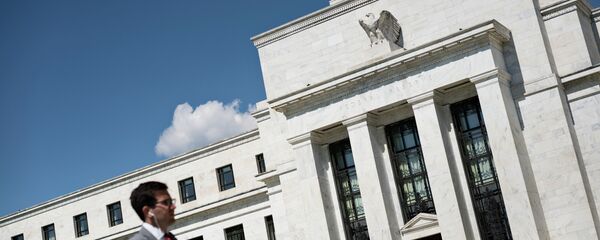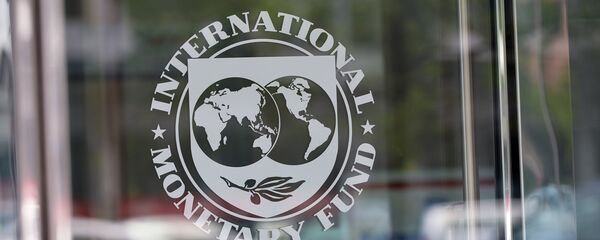Kristian Rouz — As yields on Treasury bonds are sinking due to the investors' rush for safety and lack of sustainably upbeat growth, the Federal Reserve's main concern at least till the end of the year is maintaining the economic environment in its current shape rather than making policy moves towards a noticeable return to "normality."
President of the Federal Reserve Bank of Atlanta Dennis Lockhart commented on the current and potentially upcoming regulative measures, having said that reverse correlation between inflation and unemployment is unlikely to be seen in the US economy in the medium-term. A feature of a "normal" economy, interrupted by the aggressive monetary stimulus ("quantitative easing") recently, such a correlation is hard, if possible, to restore; at this point unemployment is low, yet, inflation is subdued as well, paradoxically failing to gain momentum.
"We are clearly in a different economic period of history, economic environment… This yearning that you so often hear about and read about for a return to normal is probably a really false objective," Lockhart told Reuters. "I can envision for a number of years a lower potential growth rate… That means the appropriate interest rate remains in a low range."
The Fed are focused on their very cautious "data-dependent" approach to policy, aimed at avoiding negative policy spillovers rather than bringing the economy back in its pre-Great Recession shape. However, no recession-averse policy can prevent cyclical dynamics in the economy, and a recession as such will eventually happen, the question is, when. With US stocks having recently posted record highs, and an expected robust growth in the second quarter, as inferred from Friday's retail data and massive downturn might entail this period of encouragement.
"Ironically, one can think of a scenario where a stronger-than-expected expansion leads to financial trouble, which in turn puts into question the expansion itself," said ex-International Monetary Fund (IMF) chief economist Olivier Blanchard told the WSJ.
Blanchard emphasized the trouble stemming from the discrepancy between the massive gains in the stock market and a very modest expansion in the real economy recently.
"You have to anticipate," he also said. "If I was at the Fed, I would be slightly on the hawkish side."
A Fed hike in rates indeed might have come in handy at the moment, as it could slash the speculative gains in stocks, bringing the stock market's valuation more in line with the actual economic expansion. Meanwhile, the abundance of money liquidity in the US and across the globe could absorb the shocks of a rate hike.
"It has been a surge in net global central bank asset purchases to their highest level since 2013," Matt King of Citibank said.
Nonetheless, the Fed are bound to remain recession-averse and extremely dovish in the near-to-mid-term, meaning the spillovers of the ultra-loose monetary conditions will mount to a toxic point of severe disinvestment in the real economy, coupled with abundant business inventories and a super-charged stock market, potentially leading to a sort of a combination of a classic overproduction crisis and a financial panic, similar to the 1929 scenario.



